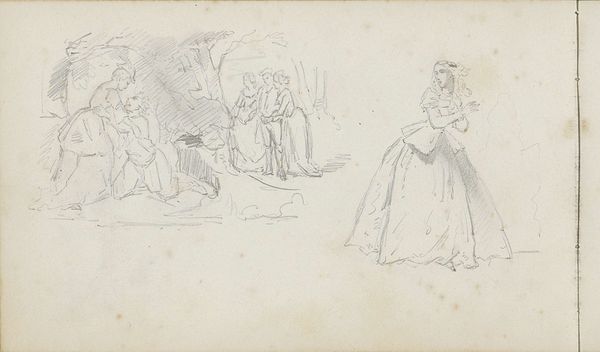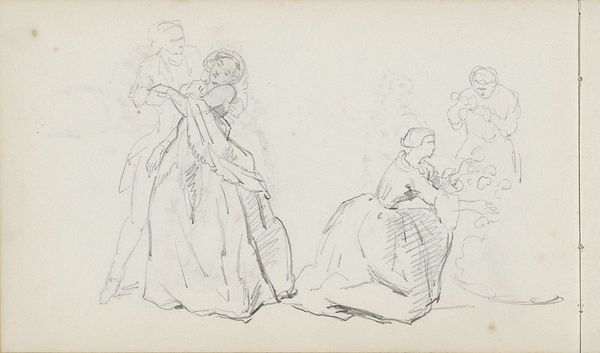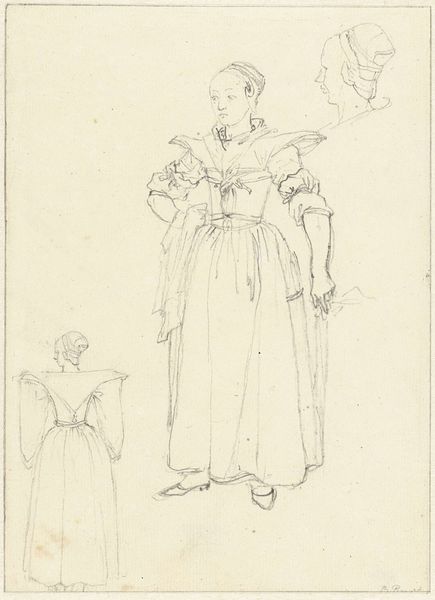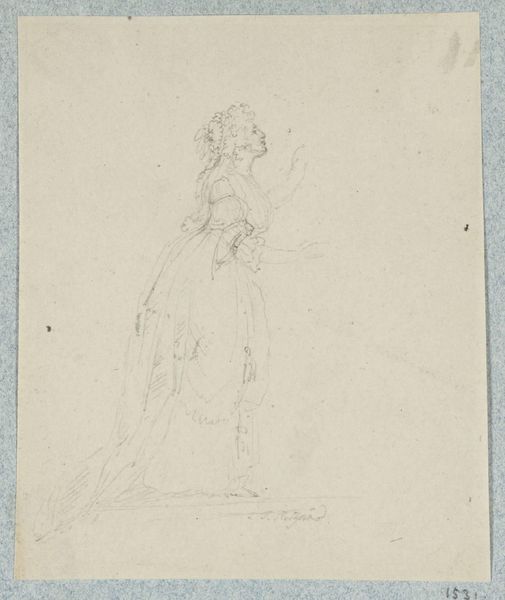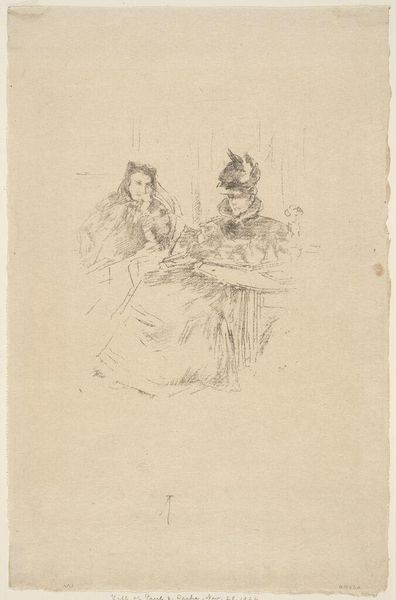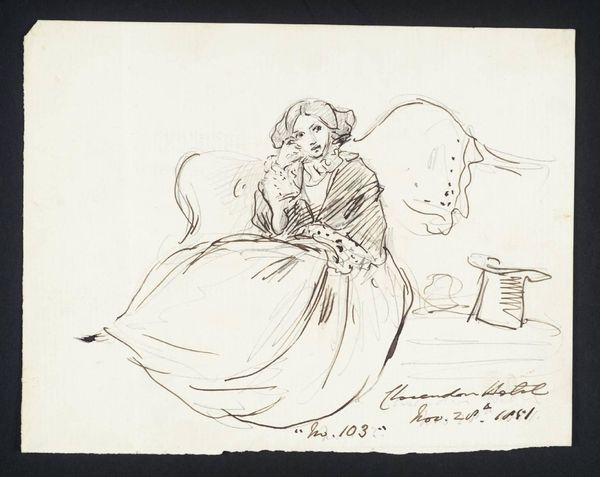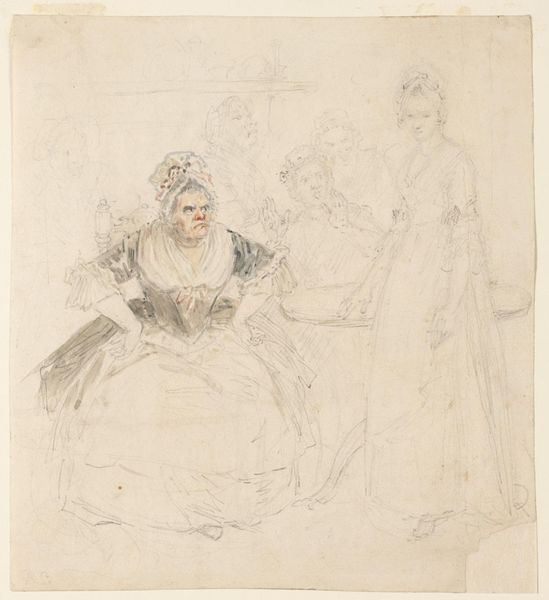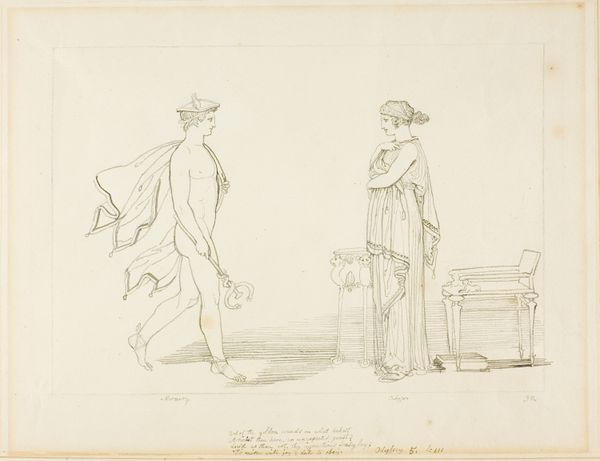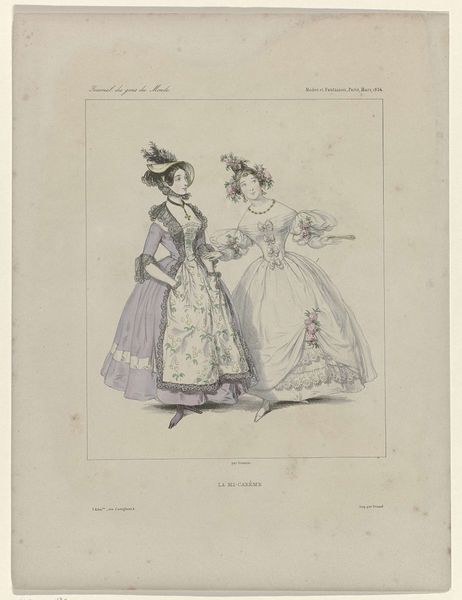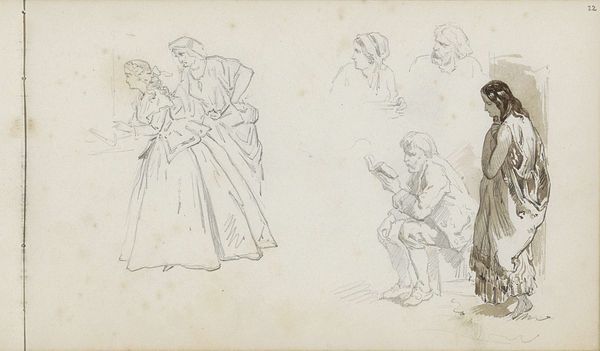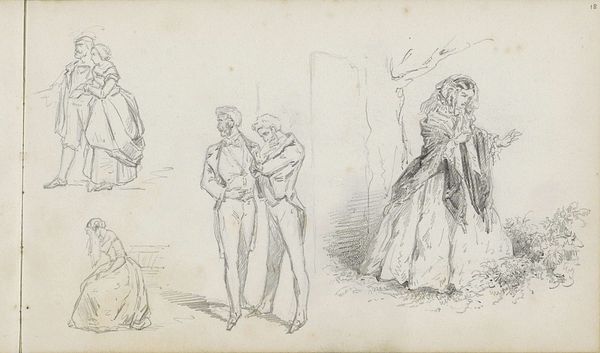
Dimensions: support: 190 x 310 mm
Copyright: CC-BY-NC-ND 4.0 DEED, Photo: Tate
Curator: This is Henry William Bunbury’s drawing, "The Minuet," from around 1780, now residing in the Tate collections. What are your initial thoughts? Editor: It feels like a satirical glimpse into aristocratic society. The exaggerated features and stiff posture hint at the constraints placed on individuals within that social structure. Curator: I see it more as a study in line and form. Notice the way Bunbury uses minimal strokes to capture the texture of their clothing. How the materials of the paper support the work. Editor: But don't you think the artist is also commenting on the performance of gender? The woman's elaborate dress and the man's posed stance reinforce societal expectations for each. Curator: Perhaps. But I'm drawn to the tangible aspects: the type of graphite, the paper's weave, the physical act of drawing itself. Editor: It's a reminder that art, even seemingly lighthearted sketches, can reflect deeper issues of power and representation. Curator: Yes, the means and the messages intertwine in complex ways. Editor: Precisely. It makes us question whose stories get told and how, through the very act of artistic creation.
Comments
tate 6 months ago
⋮
http://www.tate.org.uk/art/artworks/bunbury-the-minuet-verso-two-heads-and-three-other-heads-vertically-t09504
Join the conversation
Join millions of artists and users on Artera today and experience the ultimate creative platform.
tate 6 months ago
⋮
This drawing was evidently made by Bunbury while sitting in a chop house, or restaurant. The subject relates closely to his celebrated series of prints, A Long Minuet as Danced at Bath, published in 1787. Bunbury was the son of a baronet, and one of the most successful amateur caricaturists of the age. The noted connoisseur, Horace Walpole, called him a 'second Hogarth'. A talented, witty and sociable gentleman, Bunbury was welcome in the very part of society which provided the most fertile ground for his humour: the houses of the rich. Gallery label, September 2004

